The last great project of Soviet science: a collider in Protvino
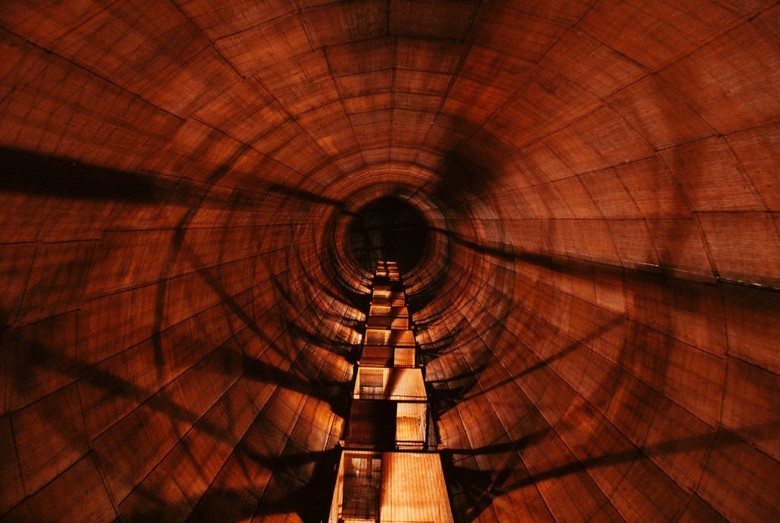
A hundred kilometers from Moscow, near the science town of Protvino, in the forests of the Moscow region buried treasure of tens of billions of rubles. It’s impossible to dig up and steal it - forever hidden in the ground, it carries value only for the history of science. We are talking about the accelerator-storage complex (UNK) of the Institute of High Energy Physics Protvino - a conserved underground object the size of almost the Large Hadron Collider.
The length of the underground ring of the accelerator is 21 km. The main tunnel with a diameter of 5 meters is laid at a depth of 20 to 60 meters (depending on the terrain). In addition, many support facilities were built, connected to the surface by vertical shafts. If the proton collider in Protvino could pass in time earlier than the LHC, a new point of attraction would appear in the world of fundamental physics. Next is about the history of the main Soviet collider, on which the physics of the future could be forged.
The biggest project
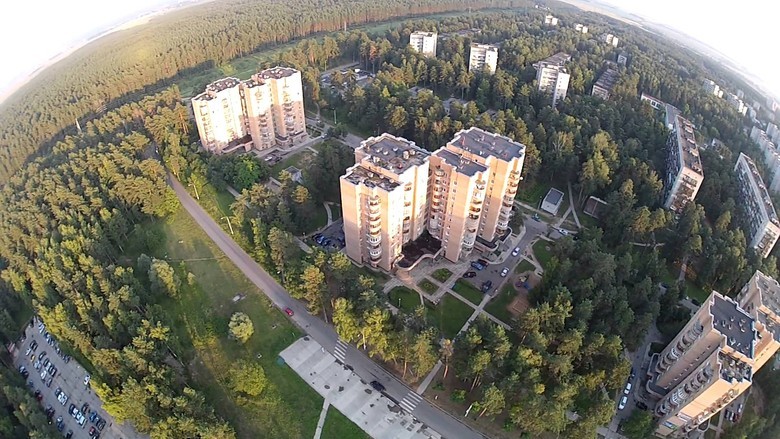
Protvino from a height of 325 meters
Paraphrasing the anecdote “I told you - damn place!” We can say that colliders from scratch do not arise - there must be suitable conditions. Many years before the strategic decision was taken to build the largest scientific facility in the USSR, in 1960, the secret village Serpukhov-7 was founded as a base for the Institute of High Energy Physics (IHEP). The place was chosen for geological reasons - in this part of the Moscow region the ground, which is the bottom of the ancient sea, allows to place large underground objects protected from seismic activity.
In 1965, the status of an urban-type settlement and a new name, Protvino, was derived from the name of the local Protva river. In 1967, the largest accelerator of its time was launched in Protvino - the proton synchrotron for energy 70 GeV (10 9 electron volts) U-70. It still operates and remains the highest energy accelerator in Russia.
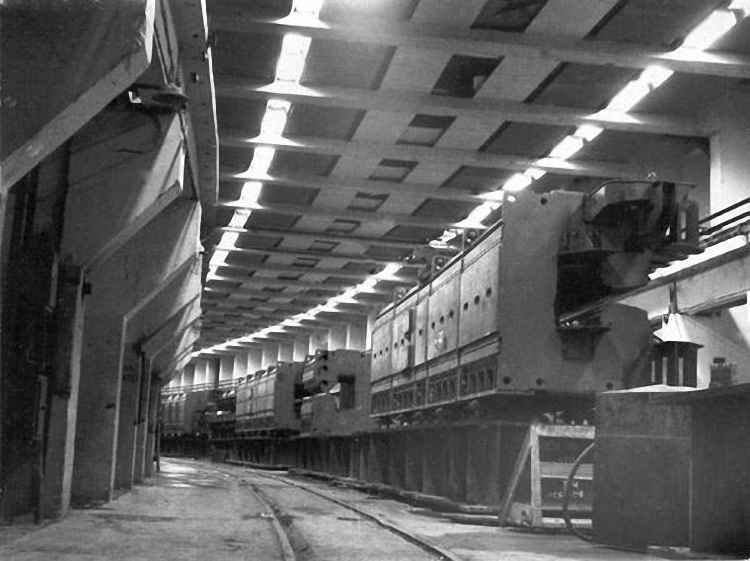
Construction of the U-70
Soon, they began to develop a project for a new accelerator - a proton-proton collider for energy 3 TeV (10 12 eV), which would become the most powerful in the world. Works on the theoretical substantiation of the UNK were headed by academician Anatoly Logunov, a theoretical physicist and scientific director of the Institute of High Energy Physics. The U-70 synchrotron was planned to be used as the first “accelerating stage” for the UNK accelerator.
In the UNK project, two stages were assumed: one was to take a beam of 70 GeV protons from the U-70 and raise it to an intermediate value of 400–600 GeV. In the second ring (second stage), the proton energy would rise to a maximum value. Both steps of the UNK should have been placed in the same circular tunnel with dimensions larger than the circular line of the Moscow Metro. Similarities with the metro add and the fact that metro builders of Moscow and Almaty were engaged in construction.
Experimental Plan
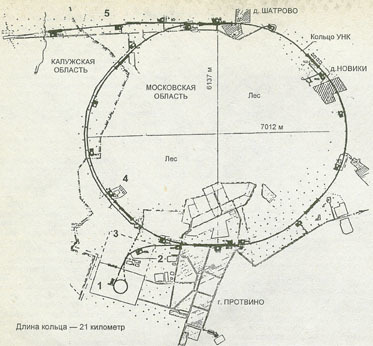
1. The accelerator U-70. 2. Injection channel — input of a proton beam into the UNK accelerator ring. 3. Channel of antiprotons. 4. Cryogenic housing. 5. Tunnels to the hadron and neutron complexes
In the early eighties, there were no accelerators of comparable size and energy in the world. Neither the Tevatron in the USA (the ring length is 6.4 km, the energy in the early 1980s is 500 GeV), nor the Super Collider of the CERN laboratory (the ring length is 6.9 km, the collision energy is 400 GeV) could give physics a necessary tool for conducting new experiments .
Our country had extensive experience in the design and construction of accelerators. The synchrophasotron, built in Dubna in 1956, became the most powerful in the world at that time: energy 10 GeV, length about 200 meters. Physicists made several discoveries on the U-70 synchrotron built in Protvino: they first detected antimatter nuclei, discovered the so-called “Serpukhov effect” - an increase in the total cross sections of hadron interactions (quantities that determine the course of the reaction of two colliding particles) and much more.
Ten years work
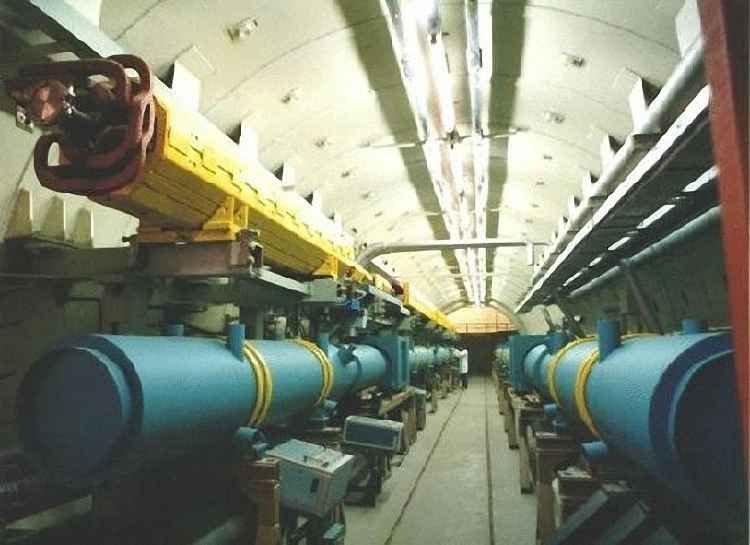
UNK full-scale model of the tunnel
In 1983, construction work on the site began by mining, using 26 vertical shafts.
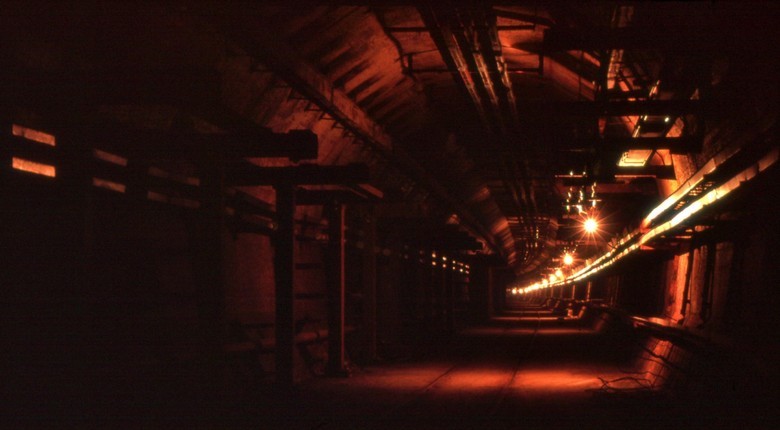
For several years the construction was carried out in a sluggish mode - only a mile and a half passed. In 1987, the government issued a decree on the revitalization of work, and in 1988, for the first time since 1935, the Soviet Union bought abroad two modern Lovat tunnel complexes, with the help of which Proton-tunnelbud began to build tunnels.
Why did it take to buy a tunnel shield, if until this fifty years in the country successfully built the subway? The fact is that the 150-ton Lovat machines not only drilled with very high accuracy of penetration to 2.5 centimeters, but also lined the tunnel arch with a 30-cm layer of concrete with metal insulation (ordinary concrete blocks, with a sheet of metal insulation welded from the inside) . Much later, in the Moscow Metro, from blocks with metal insulation will make a small section on the Trubnaya stretch - Sretensky Boulevard.

Injection channel. Rails for electric locomotive recessed into concrete floor
At the end of 1989, about 70% of the tunnel of the main ring and 95% of the injection channel — a tunnel more than 2.5 km long — were designed to transfer the beam from the U-70 to the UNK. They built three buildings (of the planned 12) engineering support, launched the construction of ground facilities around the perimeter: more than 20 industrial sites with multi-storey industrial buildings to which water supply, heating, compressed air, high-voltage power lines were laid.
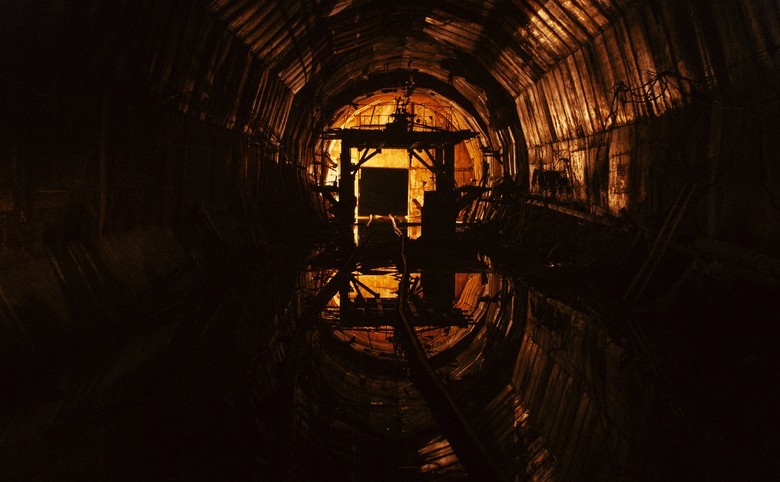
In the same period, the project started having problems with financing. In 1991, with the collapse of the USSR, the UNK could have been abandoned immediately, but the cost of preserving an unfinished tunnel would have been too high. Destroyed, flooded by groundwater, it could be a danger to the ecology of the entire region.
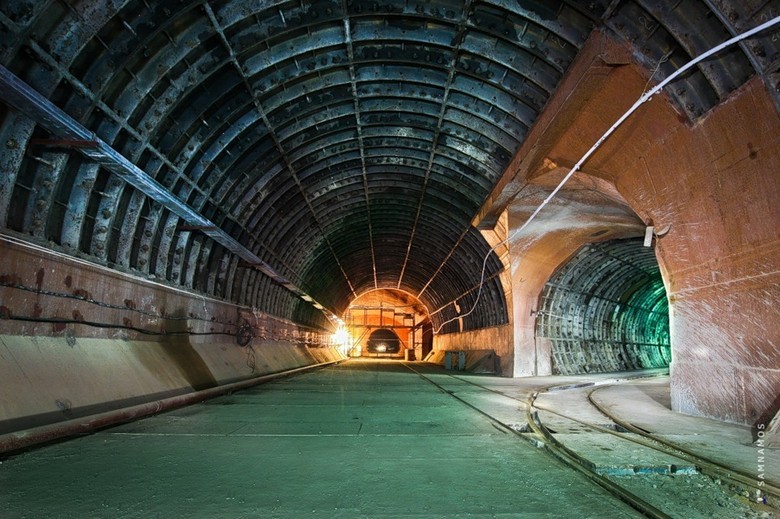
A source
It took another four years to close the underground ring of the tunnel, but the accelerator part was hopelessly lagging behind - only about ¾ of the accelerating structure for the first stage of the UNK was made, and only a few dozen magnets of the superconducting structure (and it took 2500, each of which weighed about 10 tons) .
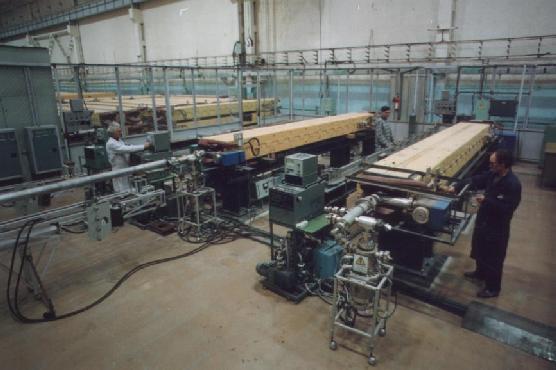
Stand for testing magnets
Magnetic system - one of the most important in the accelerator. The higher the energy of the particles, the harder it is to put them on a circular trajectory, and, accordingly, the magnetic fields must be stronger. In addition, the particles need to be focused so that they do not repel each other while they fly. Therefore, along with turning the particles in a circle, magnets also need magnets focusing. The maximum energy of accelerators is in principle limited by the size and cost of the magnetic system.
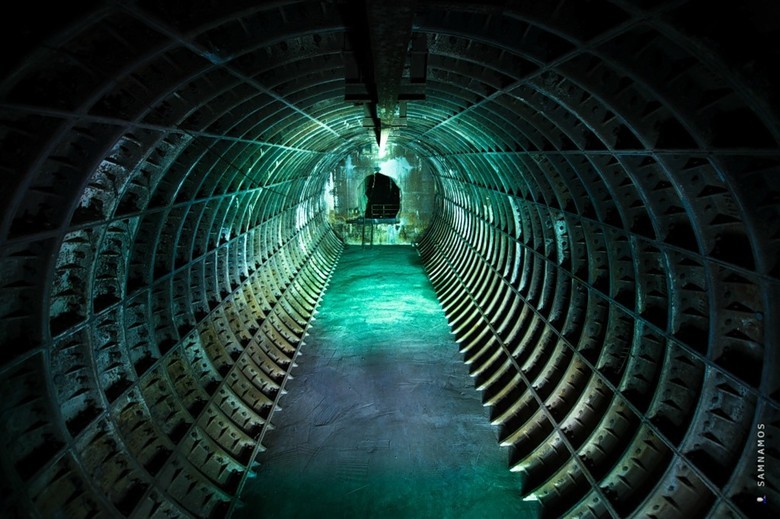
Part of the injection tunnel in our days. Source The
Injection Tunnel was the only part of the complex that was 100% ready. Since the UNK orbital plane is 6 m lower than that of the U-70, the channel was equipped with an extended section of magnets, providing a beam rotation of 64 °. The ion-optical system ensured the coordination of the phase volume of the beam extracted from the U-70 with the structure of the turns of the tunnel.
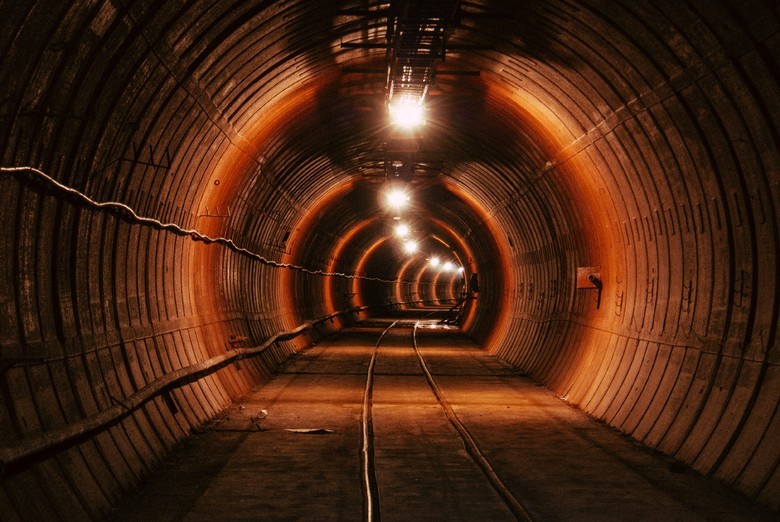
The main tunnel. In this form (only without light), it stretches for kilometers. The source
At the moment when it became clear that “there is no money and we must hold on,” all the vacuum equipment of the injection channel, pumping system, power supply device, control and monitoring system was developed and received. Stainless steel vacuum tube with a pressure of less than 10 -7mm of mercury is the basis of the accelerator, particles move along it. The total length of the vacuum chambers of the injection channel and the two stages of the accelerator, the channels for the extraction and discharge of the beam of accelerated protons should be about 70 km.
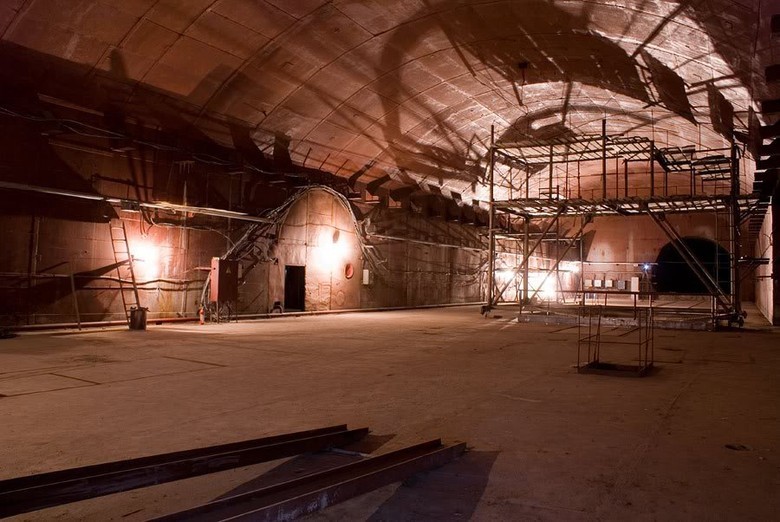
Hall was built "Neptune" with a size of 15 x 60 m 2 , where the targets of the accelerator and the control and measuring equipment were to be located.
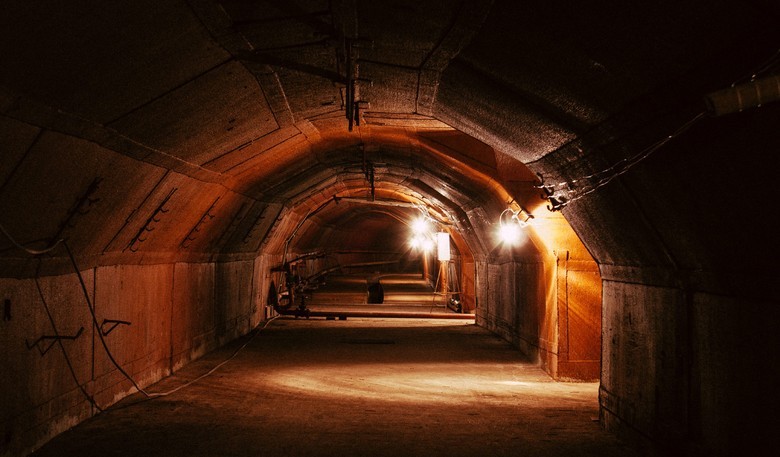
Secondary technological tunnels.
The construction of a unique neutron complex began - particles dispersed in UNK would be transported in a separate tunnel to the ground , towards Baikal, with a special detector installed at the bottom. Neutrino telescope on Lake Baikalstill exists and is located at a distance of 3.5 km from the coast, at a kilometer depth.
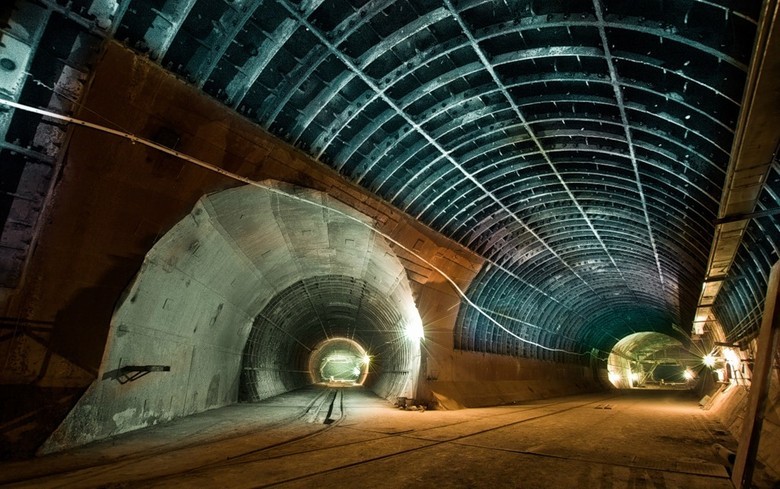
Throughout the tunnel, every half kilometer underground halls were built to accommodate large equipment.
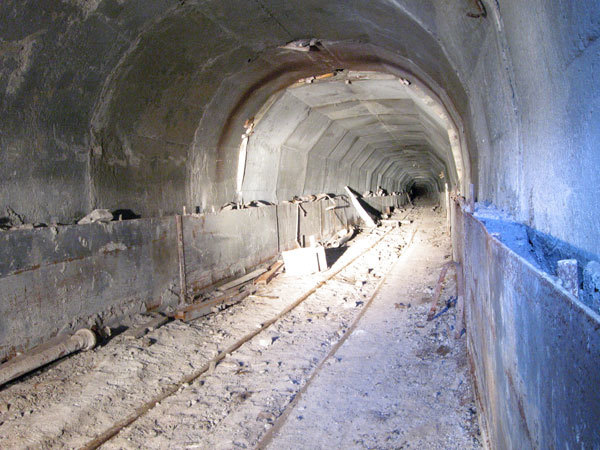
In addition to the main tunnel, another was built, technical (pictured above), designed for cables and pipes.
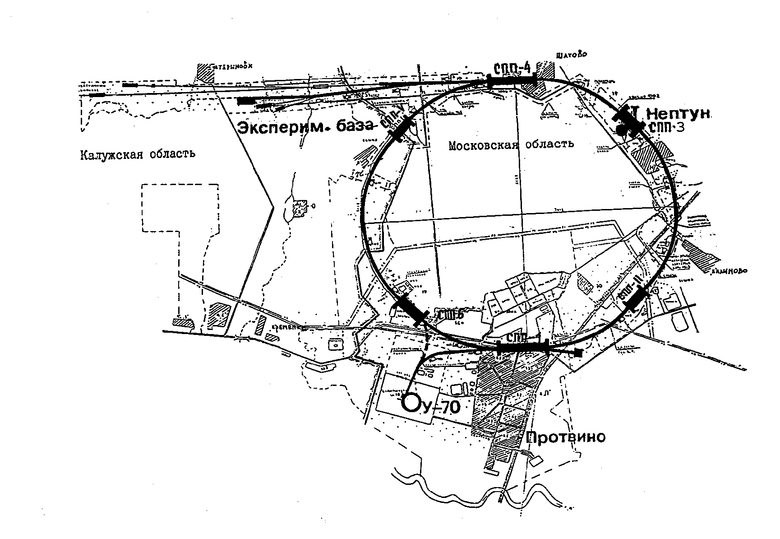
In the tunnel there were straight sections for the placement of the technological systems of the accelerator, indicated in the diagram as “SPP – 1” (the beam of particles from the U-70 falls here) and “SPP-4” (from here the particles are removed). They were extended halls with a diameter of up to 9 meters and a length of about 800 meters.
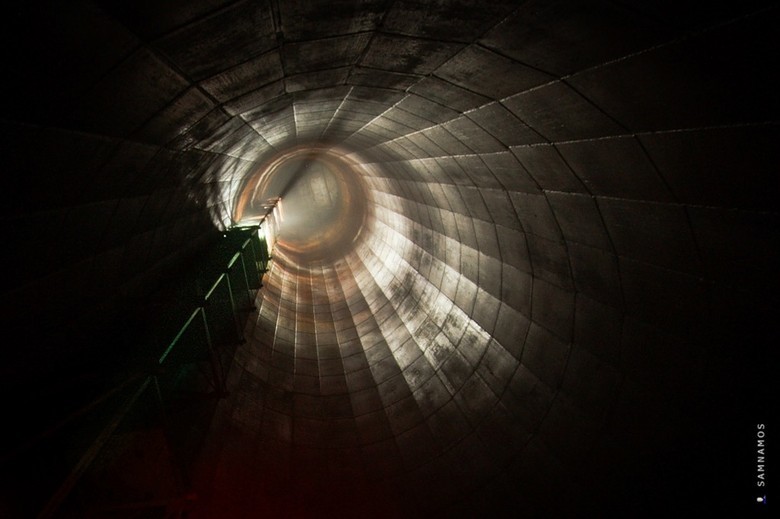
Ventilation shaft with a depth of 60 m (it is also on the KDPV). A source
Death and perspectives
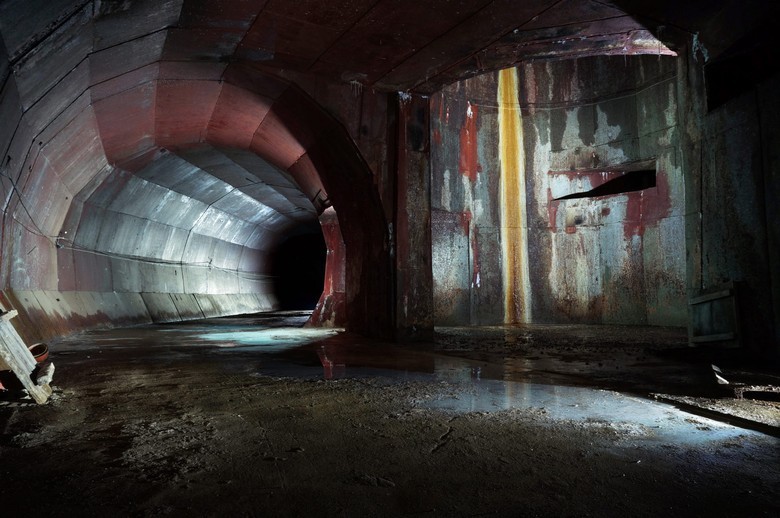
The current state of the tunnels, which are still being monitored
In 1994, builders made a link of the last and most difficult hydrogeological conditions (due to groundwater) section of a 21-kilometer tunnel. In the same period, the money almost dried up, because the cost of the project was commensurate with the construction of nuclear power plants. Neither order equipment, nor pay wages to workers has become impossible. The situation was aggravated by the 1998 crisis. After the decision was made to participate in the launch of the Large Hadron Collider, the UNK was completely discontinued.
The BAK commissioned in 2008 turned out to be more modern and powerful, finally killing the idea to reanimate the Russian collider. However, it is impossible to just throw a giant complex and now it is a “suitcase without a handle”. Every year, the federal budget spends money on maintaining security and pumping water from the tunnels. The funds are also spent on concreting numerous halls, attracting lovers of industrial exotic from all over Russia.
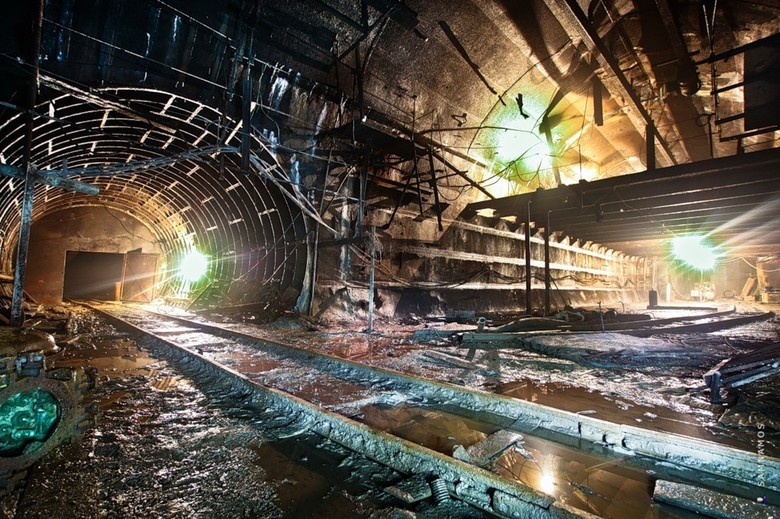
For the last ten years various ideas have been proposed for the renovation of the complex. In the tunnel could be placed a superconducting induction drive, which would help maintain the stability of the electrical network of the entire Moscow region. Or there one could make a mushroom farm. There are many ideas, but they all rest on the lack of money - even to bury the complex and fill it with concrete completely is too expensive. In the meantime, unclaimed caves of science remain a monument to the unfulfilled dream of Soviet physicists.
The presence of the LHC does not mean the elimination of all other colliders. The U-70 accelerator of the Institute of High Energy Physics still remains the largest operating in Russia. The heavy ion accelerator NIKA is built in Dubna near Moscow. Its length is relatively small - NIKA will include four 200-meter rings - however, the area in which the collider will work should provide scientists with observation of the “boundary” state, when nuclei and particles released from atomic nuclei exist simultaneously. For physics, this area is considered one of the most promising.
Among the fundamental research that will be conducted using the NIKA collider is the simulation of a microscopic model of the early Universe. Scientists intend to use a collider to search for new cancer treatment methods (particle irradiation of a tumor). In addition, the installation is used to study the effect of radiation on the work of electronics. The construction of a new accelerator is planned to be completed in 2023.
Sources:
- Hi-Tech Mail.Ru
- Soviet Hadron Collider
- From the series “For the Power Is Insulting!”: Soviet Collider. Protvino
- Large ring accelerator UNK in Protvino
- Report on the journey of diggers who were able to go through the whole ring and drive through several of its sections on an electric locomotive
- Branch of the accelerator complex
- Accelerator-Accumulation Complex
- Unfinished Collider in Protvino
